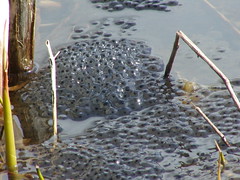The paper describing Heidi Mai-Lis Andersen's study is now available from the home page of Applied Animal Behaviour Science. The study was concerned about the use of an ear skin temperature sensor as indicator of well-being in slaughter pigs. The manuscript was submitted at the start of the year.
- Heidi M.-L. Andersen,
Erik Jørgensen, L. Dybkjær, and Bente Jørgensen.
The ear skin temperature as an indicator of pigs' thermal comfort.
Applied Animal Behaviour Science, In Press, 2007.
(doi:10.1016/j.applanim.2007.11.003)
The abstract is shown below
Abstract
The aim of the study was to investigate the relationship between the ear skin temperature and the behaviour of pigs. Fifty-four pigs weighing 75 ± 5 kg were used in three replications (18 pigs per replication) and housed in pens (six pigs per pen) in a controlled climate facility. The room temperature was changed by 2 °C from 18 °C down to 10 °C and up again to 22 °C. The ear skin temperature (EST) was continuously recorded and the activity, lying posture, location and contact with pen mates were scored by 12 min scan sampling for 24 h at the set point temperatures 18 °C, 10 °C and 22 °C. A diurnal rhythm in the EST, the posture and the lying behaviour was found. The EST was highest at night and lowest in the afternoon. During night the pigs had more physical contact to pen mates than during day time. For all three set point temperatures the predominant lying position during the night was the fully recumbent position. The room temperature affected the lying behaviour and the EST. With decreasing room temperature the pigs increased their contact to pen mates and fewer pigs were observed lying in the fully recumbent position. The EST decreased with decreasing room temperature, and the range in the EST's at the three set point temperatures was larger during day than night (4 °C versus 2 °C). The results indicate that pigs adjust their behaviour to a higher EST when resting than when they are active, and they use behavioural adjustment (e.g. increased/decreased contact to pen mates) to bring their skin temperature into a preferred interval.
